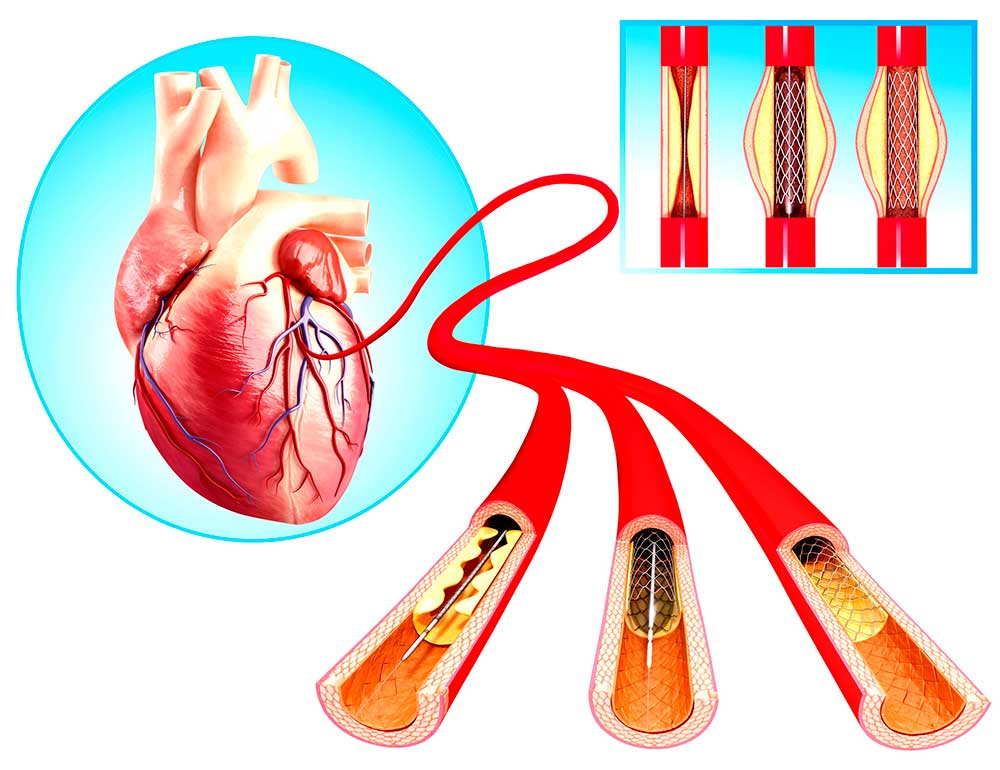REVA tackles world’s biggest cause of death

Pic: Luis Alvarez / DigitalVision via Getty Images
The number one cause of death globally is heart failure from plaque building up inside coronary arteries, causing them to narrow and restrict blood transport.
Ischaemic heart disease (Ischaemia means a “reduced blood supply”) kills almost 9 million people per year, according to the World Health Organisation. (Stroke is the next deadliest killer at 6.2 million).
To prevent the risk of blockage, bare-metal stents have been used for some 20 years.
The stents widen arteries by insertion into an artery during a procedure such as angioplasty — often inflated by a balloon catheter.
The catheter is then deflated and removed, leaving the stent inside.However, this presents the risk of restenosis — the recurrence of blood vessel narrowing.
Locally listed but US-based REVA Medical (ASX:RVA) is one of only a handful of players about to commercialise bio-resorbable scaffolds, which provide all the benefits of metal stents with the added advantage of resorbing or disappearing — which means no restenosis.

REVA’s “FANTOM” scaffold also avoids one of the other problems with traditional stents, which are coated with drug-containing polymers to help prevent restenosis.
However, exposure to the polymer coating adds to the risk of thrombosis, where blood clotting blocks the artery.
The high-performance desaminotyrosine polycarbonate polymer in REVA’s scaffold degrades over time and is eliminated from the patient’s body naturally.
This leaves behind a fully functioning artery without a permanent implant, thus preventing thrombosis.
The disappearance of the stent also enables vessel wall regrowth and allows for future intervention at the site.
REVA’s edge over other developers of bio-resorbable stents is that its polymer allows for thinner strut thickness but equal strength and enhanced deliverability.
Furthermore, REVA’s technology is completely unique in allowing full X-ray visibility, scaffold expansion in one inflation and no procedural time limitations.
FAMTOM’s patented ‘slide and lock’ mechanism also prevents deformation.
In April this year, REVA received CE Mark approval which opens up European and other markets. It will be several more years, however, before US sales commence due to the extensive clinical data and regulatory approvals required.

In May, the company released the results of clinical trials that showed patients using FANTOM experienced only a 4 per cent rate of major adverse cardiac events over a 12-month period. That demonstrates a high safety profile over a sustained period. No cases of thrombosis were reported.
The company suffered an apparent setback last month with the expiry of an exclusive international distribution agreement with peer manufacturer Boston Scientific but the company, at least for now, is now selling direct, which means it avoids a 50 per cent distribution fee.
In the six months to June (REVA has a December balance date) maiden sales revenues of just over $1 million were reported. This is small beer financially given an operating loss of $14 million, but it’s a critical milestone.
Equally importantly, REVA recently closed the second tranche of a $47 million convertible note facility which should tide it through into cash flow positivity.
In a global stent market worth about $4.5 billion, scaffolds make up only about 3 per cent.
Research house Globaldata estimates that by 2020, sales of coronary stents will reach $5.6 billion, with re-sorbable scaffolds accounting for 25 per cent.
If hypothetically REVA were to have a market share of, say, 15 per cent, that equates to $200 million in annual revenue potential.
So REVA’s significant market cap (of almost $300 million) reflects that commercialisation is underway in what is a huge addressable market.
REVA’s shares were steady yesterday at 80.5c, giving it a market cap of $332 million. Its shares have traded between 65c and $1.32 over the past year.
Tim Knapton is the founder and CEO of online tech research and finance marketplace TechVoyage. Its video/financial database and digital broadcast platform provide a more efficient way for investors to appraise listed and unlisted tech companies and for entrepreneurs to finance, acquire and exit them.
Previously Tim was Head of Corporate Broking at Deutsche Australia and before that ran a research department for a leading broking house. Tim has also been a freelance tech/finance journalist for more than 20 years and a columnist with The Australian Financial Review, The Bulletin, BRW, Shares and Australian Business.
This article does not constitute financial product advice. You should consider obtaining independent advice before making any financial decisions.
UNLOCK INSIGHTS
Discover the untold stories of emerging ASX stocks.
Daily news and expert analysis, it's free to subscribe.
By proceeding, you confirm you understand that we handle personal information in accordance with our Privacy Policy.








